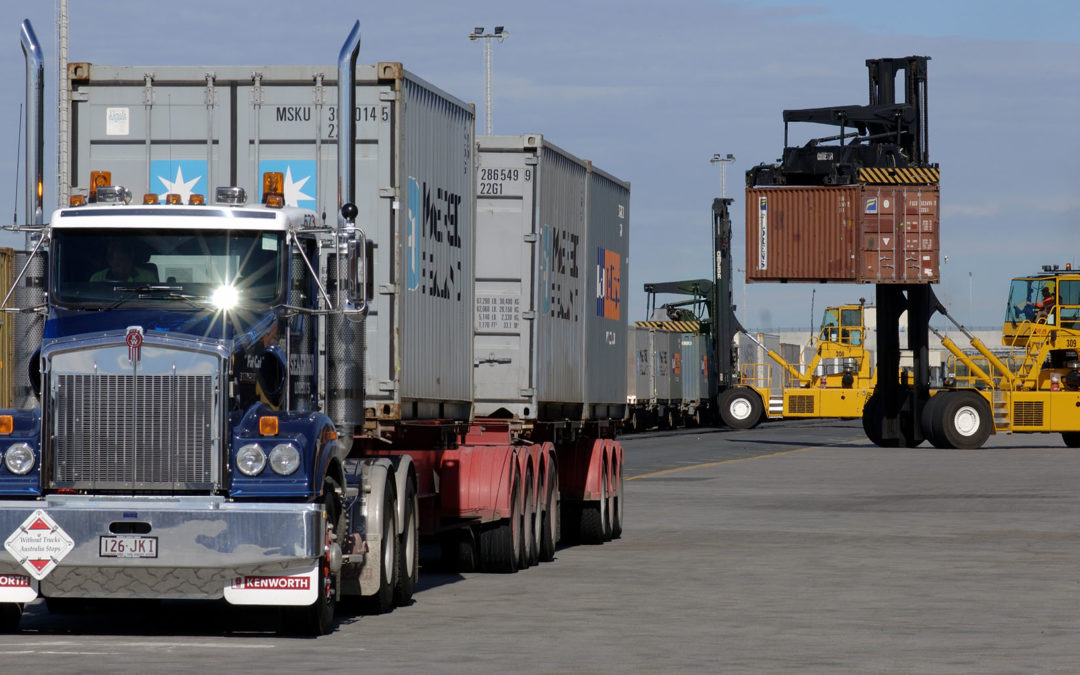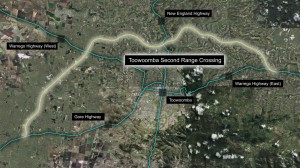
by S M G | Mar 21, 2014 | Latest News
A significant upgrade to Queensland’s inland highway network could substantially reduce transport costs for the livestock industry, new research from Australia’s scientific research body has found.
The CSIRO has developed a suite of mapping tools to analyse the worth of small and large infrastructure projects to the livestock sector.
It found that upgrading 510km of highway between Clermont and Roma to accommodate type 2 road trains and removing tick clearing requirements for cattle being taken to slaughter could save the industry $75.6 million – a 19 per cent reduction in livestock transport costs.
The tools also found that building a new abattoir at Darwin could provide a $13.2 million dollar fillip to seven Northern Territory property owners, who currently send cattle an average of 2,047km to Queensland abattoirs. The CSIRO says the new abattoir would reduce average distance travelled to 835km.
The CSIRO spent two years developing the tools, which incorporate data from more than 50,000 properties, 88,000 origin to destination combinations and more than 1.5 million recorded vehicle movements.
The tools take into account truck configuration, livestock weight and changing road conditions.
Queensland, Western Australia, the Northern Territory and the Federal Government funded the research to address a shortfall in information on infrastructure investment.
The report Livestock Industry Logistics: Optimising Industry Capital Investment and Operations and the suite of tools are available online at www.csiro.au/livestocklogistics
by S M G | Mar 21, 2014 | Latest News
In 2013, the Australian Government initiated an inquiry into ways to encourage private financing and funding for major infrastructure projects, including issues relating to the high cost and the long lead times associated with these projects.
Undertaken by the Productivity Commission, the inquiry considered costs, competitiveness and productivity in the provision of nationally significant economic infrastructure and examined ways to:
- address any barriers to private sector financing, including assessing the role and efficacy of alternative infrastructure funding and financing mechanisms, and to recommend mechanisms and operating principles to overcome such barriers;
- reduce infrastructure construction costs.
A draft report released by the Productivity Commission on the 13th March 2014 has identified an abundance of flaws, mythologies and forgone opportunities in infrastructure financing, funding and procurement.
The Commission draft outlines a proposed process for improving infrastructure investment across all levels of government; and as a consequence attracting increased private investment.
The Commission also proposes to examine further a number of potential improvements to financing mechanisms for infrastructure, including options proposed to address specific concerns related to the role of superannuation funds in greenfields projects.
The report specifically devotes thought to road user pricing, both the scope for institutional reform and the opportunities for future pricing of new and upgraded roads investment.
On infrastructure costs, the draft report finds these could be significantly reduced through the adoption of better practice procurement processes by governments.
The Commission is seeking written feedback on the draft report by 4 April, and will hold public hearings in early April. A final report will be provided to the Australian Government in late May 2014.
Further information can be found on the Productivity Commission’s website http://www.pc.gov.au/projects/inquiry/infrastructure/draft.
by S M G | Mar 21, 2014 | Latest News
THE Federal and Queensland Government have agreed to investigate incorporating.
On 25th February, Deputy Prime Minister Warren Truss and Queensland Transport and Main Roads Minister Scott Emerson announced an investigation into expanding the ARTC’s 8,500km national network to incorporate Queensland’s regional rail network.
The ARTC was created as a one-stop shop for Commonwealth and State Governments in 1997 and is responsible for 8500kms of track in Australia. This includes a 94km section between the NSW border and Acacia Ridge, which was transferred to the ARTC in 2010.
Mr Emerson said ARTC officers would begin working with Queensland Rail staff immediately and would report back to the Queensland and Federal governments by mid-year.
The Queensland rail freight network includes about 6600km of track outside south-east Queensland.

by S M G | Mar 21, 2014 | Latest News
 The State and Federal Governments have given the green light to the Toowoomba 2nd Range Crossing (TSRC). The Announcement was made on 31 January 2014, and the procurement phase has already begun with “Register of Interest” being open to interested parties, documentation is available on the Projects Queensland website.
The State and Federal Governments have given the green light to the Toowoomba 2nd Range Crossing (TSRC). The Announcement was made on 31 January 2014, and the procurement phase has already begun with “Register of Interest” being open to interested parties, documentation is available on the Projects Queensland website.
Toowoomba is a transport network hub for the Darling Downs and a gateway to the developing energy sector in the Surat Basin. With the Warrego, New England and Gore Highways converging in Toowoomba en route to and from the east it has become a focal point for both interstate and intrastate freight movement. Increasing traffic volumes are putting pressure on the highway network that passes through Toowoomba and over the Toowoomba Range.
The TSRC is a bypass route to the north of Toowoomba, approximately 41km in length, running from the Warrego Highway at Helidon in the east to the Gore Highway at Athol in the west via Charlton and is expected to be ready for commencement by 2015.
The project is the largest Commonwealth Government commitment to a single regional road project in Queensland history.
Treasurer Tim Nicholls said “Modelling shows over the next 30 years, the Toowoomba Second Range Crossing will help bring about a $2.4 billion increase in productivity in the Toowoomba region alone, boosting national productivity by $3.1 billion.”
The QTLC will closely follow the development of the specifications for the TSRC and will engage with industry and government to identify and promote tangential infrastructure, planning and policy that will leverage additional efficiency and productivity benefits.
by S M G | Mar 21, 2014 | Latest News
On 10 February 2014 the Heavy Vehicle National Law 2012 (HVNL) commenced, replacing existing laws governing the operation of all vehicles over 4.5 tonnes gross vehicle mass in Queensland, New South Wales, Victoria, South Australia, Australian Capital Territory and Tasmania.
The NHVR will provide streamlined and practical operations for heavy vehicle access, accreditation, vehicle standards and fatigue management, and will continue to take measures to evolve into your one-stop-shop for heavy vehicle road transport business with government. The NHVR will continue to manage NHVAS accreditation and PBS design and vehicle approvals
The NHVR will be delivering the following services in those states and territories where the law has commenced:
- issuing permits for heavy vehicle access, together with new forms for access applications
- NHVAS approvals
- PBS vehicle design and vehicle access approvals
- consistent compliance and enforcement
- a new risk classification system for advanced fatigue management
- vehicle inspection standards
For more information, visit www.nhvr.gov.au.
by S M G | Mar 21, 2014 | Latest News
In October 2013 last year, the Legislative Assembly agreed to a motion that the Transport, Housing and Local Government Committee inquire and report on options to incentivise the agricultural and livestock industry to utilise rail.
To investigate these options the committee is consulting with key industry groups and through written submissions and a series of public hearings.
The QTLC’s submission to the Inquiry drew on the content in its Strengthening Queensland’s Supply Chains Report, which was submitted to government in May 2012.
The submission reinforced many of the key messages contained within the report, such as the importance of robust data collection, fit for task infrastructure, strategically located intermodal terminals, the value of a dedicated rail freight corridor and the importance of above rail competition.
To view a copy of the QTLC submission CLICK HERE.
The Committee will report back to the House with its findings by 10 June 2014.


